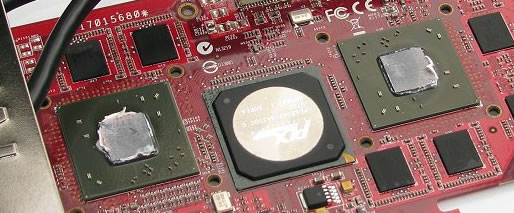For well over a year Nvidia has remained at the top of the PC graphics market, holding the performance crown so comfortably they never looked as they might lose it.
Looking back in time we discover that the only threat from competition in recent times came from the Radeon HD 2900XT, which was never meant to defeat the GeForce 8800 GTX anyway. Then late last year we saw the arrival of the ATI Radeon HD 3870, though again this product was not in contention for the performance crown, although it served well its purpose of creating more value in the mainstream price points.
As we entered 2008, Nvidia remained and still is almost tight lipped about a true next-generation product that could push the performance envelope further. At the same time we were expecting AMD/ATI to hold its promise about a dual-GPU solution based on the Radeon HD 3800 that unlike conventional multi-GPU technology, would not require a Crossfire-compatible platform to work, and would become a real contender in the high-end graphics market.

The Radeon HD 3870 X2 puts two GPUs in a single card.
We have to admit we were somewhat skeptical about the Radeon HD 3870 X2 when we were presented with the idea on paper. The single-card implementation of Crossfire could have easily transformed into big product delays and an overall less appealing product down the line. But AMD has proven itself this time, successfully launching the Radeon HD 3870 X2 on schedule, and perhaps even more important than that, having actual products on retail shelves immediately.
As you should know by now, the ATI Radeon HD 3870 X2 is essentially two Radeon HD 3870 GPUs stuck together on the same PCB. The GPUs use a PCI Express 1.1 bridge to communicate in much the same way Crossfire ATI cards would. However, because the X2 is meant to be a 'transparent' single card solution, it is still possible to use two of these graphics cards in Crossfire mode. Meaning that with the proper drivers, a quad-Crossfire system becomes a possibility.
Even before testing the X2, we could imagine the performance of two Radeon 3870 GPUs put together would be quite good, but as is the case with standard dual-card SLI or Crossfire, we also expected it to suffer from the same variance depending on the game run. And indeed, the performance of the Radeon HD 3870 X2 turned out to be quite close to that as you will see in our benchmarks.
But the brilliant part about the new Radeon design is that it doesn't rely on drivers or a specific chipset to work (using the two GPUs in a single board). That said, we have still found the current crop of drivers (Catalyst 8.1 and 8.45) to be a little immature. While for the most part the system was stable during testing, every now and then we would encounter a random crash which did not appear to be specific to any game. Whether this is a problem related to drivers running on Windows Vista Ultimate 64-bit or not, we are unsure at this point.